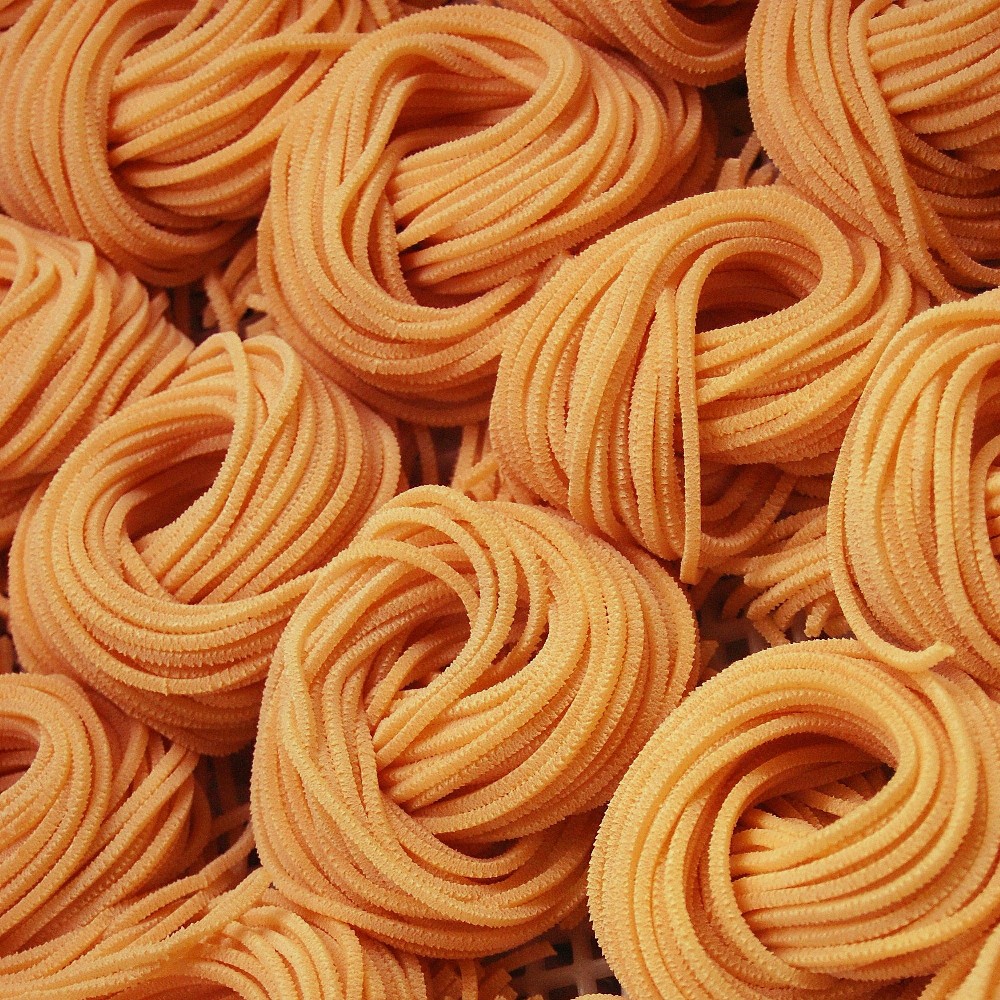Would you believe that the year I ate nothing but pasta I was the thinnest of my life?
The carb-loaded staple gets a bad wrap sometimes, but it is the basis of a lot of nutritious (and easy) dishes.
The Non-Recipe Recipe
Instead of listing a bunch of my favorite quick recipes, I’m going to explain the basic principle behind making four different types of pasta sauce.
With this knowledge, you can whip up a year’s worth of last-minute dinners without eating the same thing twice.
You know the old adage about teaching a man to fish? I’ve seen it attributed to Chinese sages, Jesus, and the Brits. But the principle is sound.
Give a man a fish and you feed him for a day. Teach a man to fish and you feed him for a lifetime.
As far as cooking goes, no matter how much I adore recipes, you need to know how to strike out on your own. Or, as another of my favorite sayings goes:
If God had intended us to follow recipes, he wouldn’t have given us grandmothers. (Linda Henley)
Let me teach you to fish (or pretend to be your Italian grandmother).
#1 The Wine Sauce
One of the most timeless ways to create pasta sauce, this method brought my white wine cherry tomato angel hair recipe into being.
For the past couple weeks while I have been moving, this was our dinner nearly every night. It requires very few ingredients and is surprisingly adaptable.
Start with some extra virgin olive oil and minced garlic. Let this cook at a very low temperature until the garlic smell fills your house. Then douse the pan with half to a whole cup of wine and turn the heat to high. In the meantime, chop whatever tomatoes you have around and add them in.
Once most of the liquid has reduced, add a quarter to a half cup of pasta water and dried herbs of your choice. The sauce should be liquid-y, but thicken up with the starch from the pasta water. Toss with whatever pasta you have around, dust with grated cheese and enjoy!
A few ways to mix it up:
- Merlot, purple heirloom tomatoes, thai basil, and smoked gouda
- Chardonnay, small yellow tomatoes, peperoncino and asiago
- Rosé de Provence, pink heirloom tomatoes, Herbes de Provence, and crumbled goat cheese
#2 The Vegetable Sauce
Before I really knew anything about cooking, this was the pasta sauce I made. In fact, it was basically the only kind I made for a year or two. And we never got sick of it.
A healthy dose of salt and pepper and fresh vegetables are the key to making this sauce taste truly excellent.
As usual, start by gently sautéing garlic, as in the sauce above. Roughly chop an onion and add it to the garlic, cooking until the onions soften. Roughly chop a tomato or two, add it in, and turn the heat up to medium.
Then, this is where the magic happens. Look in your fridge and add whatever you find. Within reason. Spinach? Great! Chard? Chop up the stem and wilt the leaves. Just don’t add too many different vegetables at once. You really only need one. Add your chopped veggies, cook a minute or two more, and voila!
Other veggies to add:
- zucchini (or other summer squash – juliened) [spice with a bit of basil]
- button mushrooms (sliced) [spiced with thyme]
- eggplant (sliced, covered with salt, and left to stand for about a half hour before using) [spice with oregano or rosemary]
- fried sage leaves [add right at the end]
#3 The Puree
In Italian, this is called “passato,” which sounds much sexier.
Passato is the quintessentially easy pasta sauce. All you need is some fresh veggies, a blender and some long pasta – spaghetti or buccatini are perfect.
For a successful quick passato, the key is to use vegetables that are meant to be eaten raw. Red bell peppers are perfect raw or roasted. Tomatoes and onions are also natural choices. Mix it up though. If you would find it on a crudités platter, you can make it a passato.
Roughly chop your vegetable of choice and puree it in a blender or magic bullet. On the stove, heat it just to a boil, and salt to taste. Mix with pasta till it is evenly coated. That’s it!
Interesting veggies to puree:
- fennel
- zucchini
- asparagus (steam, then puree)
- artichoke hearts
- celery
- peas
- tomatillos
#4 The Pesto
Who doesn’t love a good pesto? Even though I’m not a potato person, gnocchi with pesto has always been my favorite dish.
While you can find pretty authentic pesto in most U.S. stores these days, there are a lot of Italian varieties that don’t make it across the ocean. The red Sicilian variety has ricotta, almonds, and tomatoes, while the sun-dried tomato version is divine.
The name comes from the same base as pestle (like mortar and pestle). Pesto is essentially just a mashed up mix of herbs, garlic, and oil. You can add some hard cheese and nuts, but any will combination of the above will do.
In a food processor blend one clove of garlic and 1/3 cup each cheese, nuts, and olive oil for each cup of herbs to a fine paste. Add it to cooked pasta like gnocchi or penne rigate that had ridges to hold the sauce. Use three tablespoons of pesto per person and add more olive oil if it isn’t coating the pasta enough.
Potential pesto combinations:
- rosemary, walnuts, piave
- Thai basil, almonds, asiago
- beet greens, hazelnuts, firm goat cheese



COMMENTS ARE OFF THIS POST